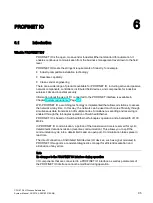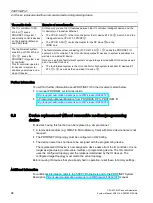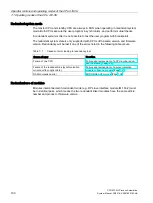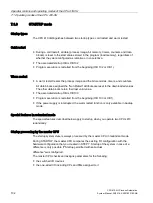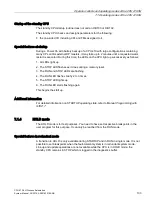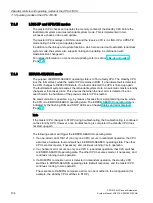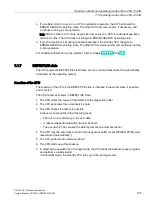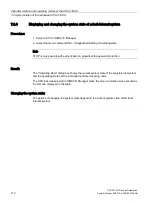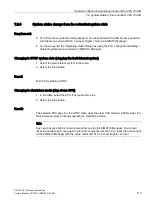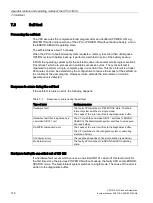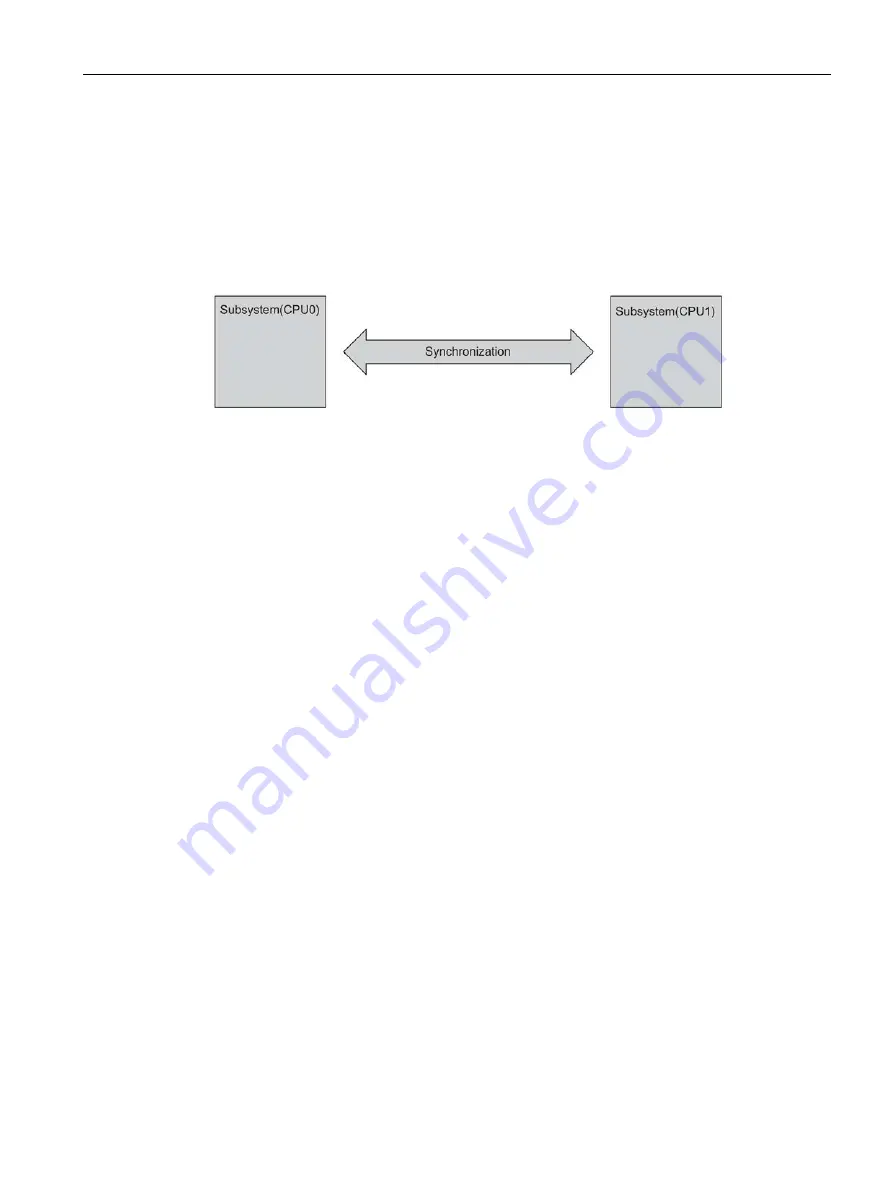
Operator controls and operating modes of the CPU 410-5H
7.2 System states of the redundant CPU 410-5H
CPU 410-5H Process Automation
System Manual, 09/2014, A5E31622160-AB
107
9.
Switching to a CPU using only one intact redundant link
10.
Switching to a CPU with modified PO limit
Synchronizing the subsystems
The master and standby CPUs are linked by fiber-optic cables. Both CPUs maintain event-
synchronous program execution via this connection.
Figure 7-1
Synchronizing the subsystems
Synchronization is performed automatically by the operating system and has no effect on the
user program. You create your program in the same way as for standard S7-400 CPUs.
Event-driven synchronization procedure
The "event-driven synchronization" procedure patented by Siemens was used for the S7-
400H.
Event-driven synchronization means that the master and standby always synchronize their
data when an event occurs which may lead to different internal states of the subsystems.
Such events include, for example, alarms or changes of data through communication
functions.
Continued bumpless operation even if redundancy of a CPU is lost
The event-driven synchronization method ensures bumpless continuation of operation by the
standby CPU even if the master CPU fails. The inputs and outputs do not lose their values
during the master-standby switchover.



